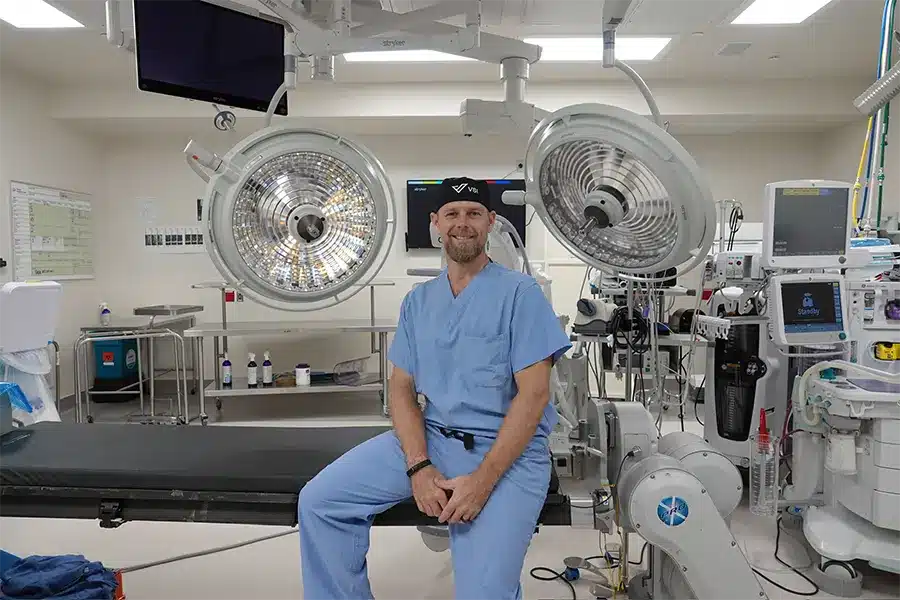
What We’ve Learned Leading the Way in 2020 with Augmented Reality for Spinal Surgery
The year 2020 has been a challenging year for many reasons, but one bright spot in our field of spinal health care was the introduction of augmented reality (AR) in spinal surgery. We have been an early adopter of this innovative technology at VSI and this year our surgeons pioneered its use in a variety of ways.
- Dr. Christopher Good performed the 1st Augmented Reality Spinal Surgery in Virginia and DC Region.
- Dr. Ehsan Jazini performed the World’s first Augmented Reality Hybrid Spine Surgery and the World’s first Laminectomy With Augmented Reality.
- Dr. Colin Haines performed four multi-level lumbar spinal fusion with Augmented Reality.
Approved by the FDA just one year ago – in December 2019 – AR is expected to revolutionize the healthcare industry and has been shown to improve accuracy, potentially leading to better patient outcomes.
Our surgeons use the AR “Xvision” system, made by Augmedics. The technology utilizes all elements of a traditional navigation system, including a special headset the surgeon wears during the procedure, which makes it possible for them to visualize a patient’s 3D spinal anatomy during surgery – almost like they have ‘X-ray vision.’ This groundbreaking new technology has the potential to streamline and partner several technologies in the operating room giving surgeons better control and making procedures easier, safer, faster, and less invasive.
While we are at the forefront of our industry in our early use of this groundbreaking technology, we also know this is just the beginning for AR in the OR – for us and everyone else. Here are 3 reasons why:
- There’s less muscle dissection
One of the many benefits of utilizing augmented reality in surgeries is the ability to minimize muscle dissection. Using AR allows our surgeons to minimize muscle damage compared to traditional spine surgery. This minimally invasive approach causes less pain, which speeds healing and reduces the recovery period.
- The surgeon rarely has to take their eyes off the patient
The navigation system projects the patient’s CT images into the surgeon’s headset, making it possible for him to see high-resolution 3D images of the patient’s spine superimposed over the patient’s actual anatomy in real-time. The surgeon’s personalized headset accurately determines the position of surgical tools and superimposes them on the patient’s CT data, allowing the surgeon to stay focused on the patient at all times and eliminating the need to look up and across the OR at images displayed on other screens, which has long been standard operating procedure.
- AR offers enhanced views for surgeons
This technology holds infinite promise in surgery and is especially exciting in our field where we operate in very narrow channels. AR provides enhanced views of spinal areas for the surgeon. It is also expected to be particularly useful during revision surgeries when the anatomy is distorted, allowing surgeons to easily make adjustments as they navigate during procedures.
This really is just the beginning for AR, which has the potential to continue to transform spinal surgery – and all surgeries – for the better. As this technology continues to advance, you can trust that it will continue to make the placement of spinal instrumentation more accurate and safer, reduce OR times, and translate into faster recoveries. We will continue to devote ourselves to leading the way with this innovation to help our patients return to pain-free lives, faster!
Topics covered
About the Author
Featured Resources
Insights to Achieve a Pain-Free Life



